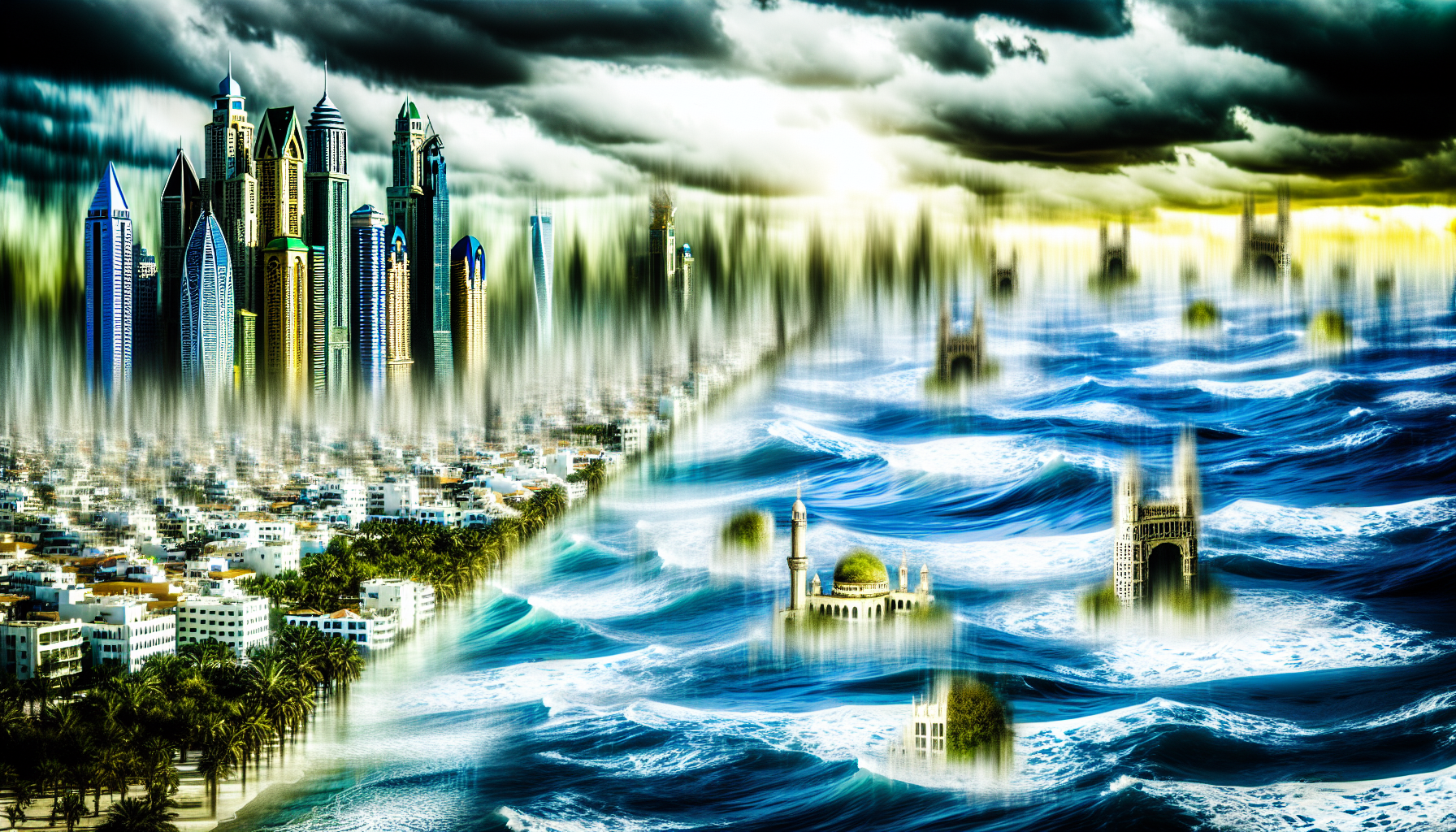As the sun rises over the horizon, casting a warm glow over what was once a bustling metropolis, the truth of our age is starkly etched against the light. Towering edifices that scraped the skies are now but tombstones on a watery grave as the relentless tide of climate change reclaims the land once snatched away by human ambition. Sinking Skylines—a phenomenon sweeping the coastal cities of our fragile planet—tells a story of nature’s indomitable will to take back what was always hers.
“Mother Earth is patient; she waits as the architects of glass and steel ascend, only to watch them descend into her bosom,” murmurs an environmental philosopher that I interviewed, gazing out upon the submerged sprawl of what was once a symbol of human triumph. Metaphors of Atlantis are no longer fantasies or cautionary tales; they are the submerged realities of our Green Dystopia.
The aquatic graveyards of the coastal titans are not just the result of rising sea levels. They are a testament to human myopia. Like the long-outdated Solaria, where the sun’s gifts were squandered by pollution, the skylines succumb to the water’s slow wrath. This new Atlantis does not shimmer with the myth’s grandeur but rots with the decay of negligence. Marketplaces of ideas and goods have abandoned the upper-world’s light, retreating to the somber depths of subterranean labyrinths where commerce continues with a morbid beat.
Cities once vibrant with life and light now slumber beneath the waves, a stark contrast to the nocturnal cities ‘Solar Orphans’ of a bygone era sought refuge in. With streets hauntingly silent and skyscrapers looming like specters, the murky waves lap at the husks of abandoned vehicles and homes—quiet memorials to the world that was.
The collapse of these once-proud metropolises into the sea makes tangible the tales of the past’s Frozen Tombs. Historical whispers revealed by the thawing ice are but puzzles of warnings unheeded. Like the shadows cast by Solaria’s own failure, these sunken cities cast their warning to those who would listen. Memories of their inhabitants persist, silenced and frozen in time, their voices a cacophony of lessons for those struggling to survive within the dying gasps of a world gasping for air.
Experts predict that as the earth continues to warm, and its wounds deepen, more skylines will bow and crumble. “It’s too late for prevention; at this juncture, all that’s left is to document and remember,” remarks a scientist who has dedicated his life to the study of climate disasters. The sense of urgency to act may have been snuffed out, but the echo of what these skylines represented may yet stir the soul into mourning or, by some slim chance, inspire a fleeting glimmer of resolve.
Within the submerged chaos, there is a grotesque beauty—a world of refracted light and shadow, where nature reclaims and humans become the fossils of a future world. Where the duality of disaster presents both catharsis and a mandate: to observe, to learn, and to let these watery graves not be in vain.
When the night falls, the silhouette of sinking skylines tells a story, reminding us of the gluttonous consumption that led here. Yet within the depths, among the ruins, lies the inextinguishable human spirit—still dreaming, still yearning, still surviving—albeit in a reality far removed from the once glowing promise of a utopian world.
As this saga unfolds, where cities become sepulchers and the earth reclaims its ground, we continue to chronicle these testaments of the time when the earth swallowed what man had wrought, a humble remembrance of the might that was and the silence that followed.
